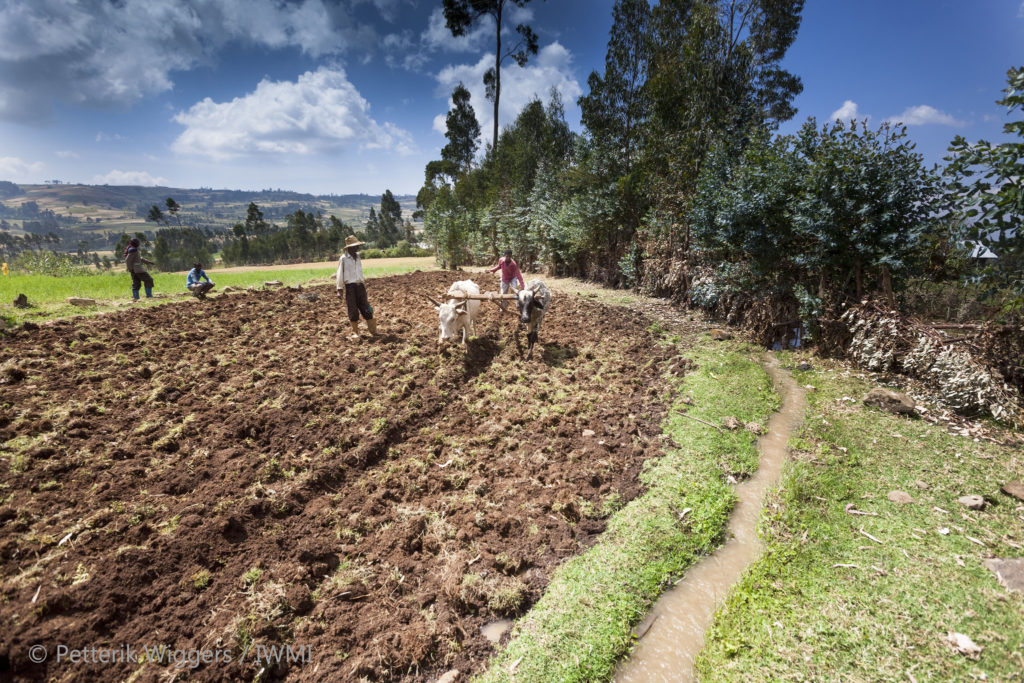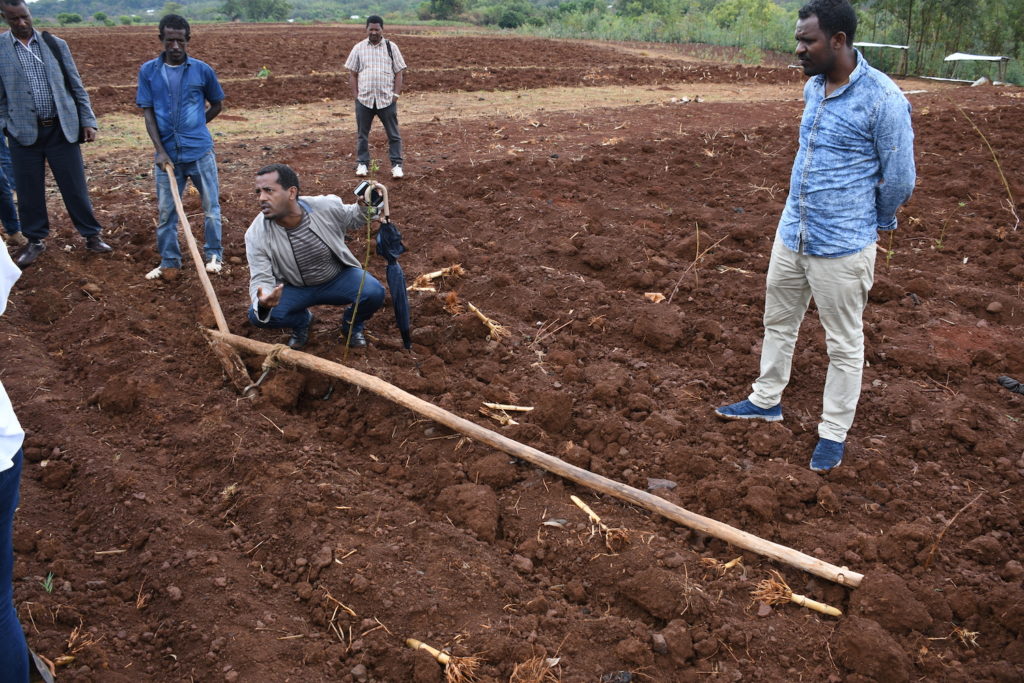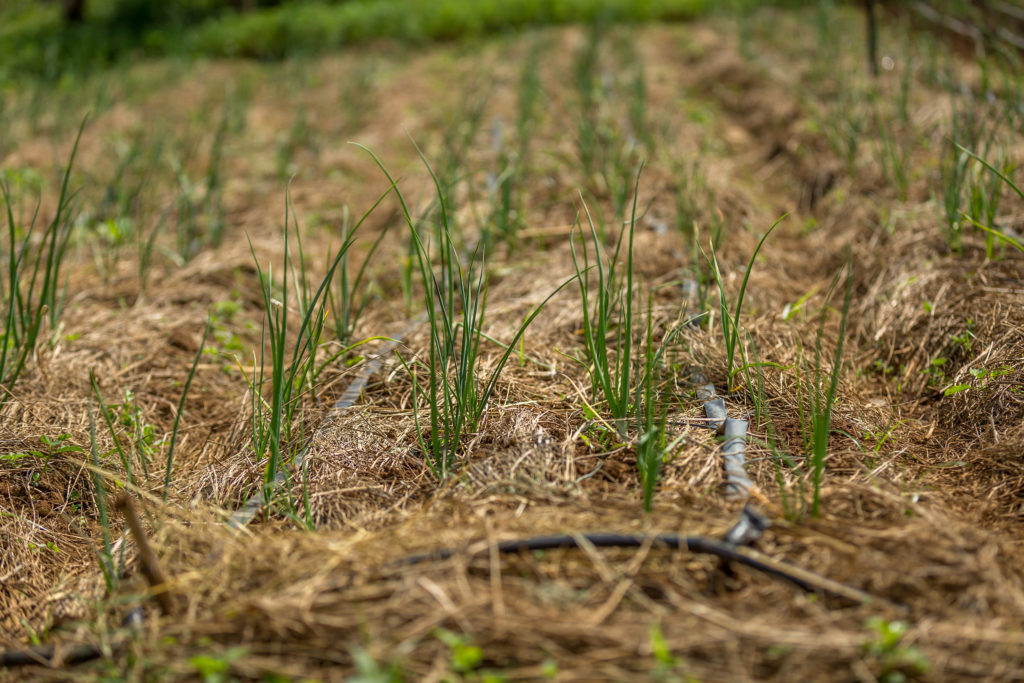Groundwater comes from the ground, right? Wrong. In the face of growing water scarcity, scientists, entrepreneurs, and farmers turn the problem on its head and increase groundwater reserves through improved water and soil management.
It is no surprise that millions of farmers are facing increasing water scarcity under the current climate crisis. In the Ethiopian Highlands, this reality strikes especially hard when the dry season begins every year in October. As the rain stops, farmers rely on shallow wells to supply them with water for basic household needs, livestock, and irrigation.
Each year, many of these farmers eventually – say, around December – come to discover that their well has run dry. Groundwater reserves have become exhausted before the end of the dry season. These water shortages have serious consequences for the health and welfare of farmers, and reducing water use has been considered the obvious answer. What’s often overlooked is that groundwater availability during the dry season can be boosted if only water and soil are used and managed right during the previous season.
Scientists from the Feed the Future Innovation Lab for Small Scale Irrigation (ILSSI) are looking at rainfall and groundwater as one interconnected system. This shift in thinking opens the door to a new kind of solution, namely to increase the supply of groundwater, in addition to limiting its use when viable. A new plow, developed by an Ethiopian entrepreneur, provides part of the answer.

A lifeline during the dry season
Households in Ethiopia’s Highlands rely primarily on shallow wells, up to 25 meters deep, to access groundwater for all uses, according to a survey carried out by graduate students at Bahir Dar University, in partnership with the International Water Management Institute (IWMI).
Being able to rely on wells for year-round access to water is a main coping mechanism for farmers living in a changing climate. This means that communities are left with difficult choices when wells are depleted in the middle of the dry season. What little water might be left in the wells, plus whatever can be carried in from other better-supplied wells, ponds, or rivers, must be used wisely.
When it comes to prioritizing water uses – drinking, washing, watering livestock, and farming – it is often irrigation that loses out, as households have to choose. But, without enough water for irrigation during the dry season, fewer nutritious crops will be available, leaving families hungry and undernourished. Restocking shallow groundwater reserves therefore becomes central to ensuring healthy, viable livelihoods.
A new plow could help
Groundwater reserves are replenished when rainfall infiltrates into the deeper soils. But this natural cycle has been disrupted in the Ethiopian Highlands, where much of the otherwise ample rainfall runs off the sloping hills sides, causing soil erosion and destruction.
For centuries, Ethiopian farmers have used the traditional Maresha plow to till their lands. The problem is that plowing at the same depth for so many years has in some soils formed a hard crust – a hardpan – below the surface. It prevents infiltration of rainwater into the deeper layers of the ground, thus hindering much-needed recharge of groundwater reserves.

Manually breaking up this hard crust can reduce rainwater runoff by more than half, but the work is cumbersome, and without access to suitable machinery, farmers are unlikely to do it. That’s one reason why ILSSI researchers – at IWMI and Bahir Dar University – have collaborated with private entrepreneur Aybar to test a new kind of plow. The Berken plow cuts deeper than the traditional plow, breaking up the hard crust formed in previous years. Emerging research results indicate that the plow conserves soil and water by reducing rainwater runoff and that reduced soil disturbance increases soil moisture.
In other words, using the new Berken plow might increase water stored in soils, helping to recharge groundwater reserves. This would mean that more water would be available for dry season irrigation, and for supplementary irrigation in the rainy season, thanks in part to a private sector innovation.
Limited groundwater on the slopes of the highlands
Restocking groundwater reserves where possible, using tools such as the Berken plow, is not in and of itself sufficient to ensure that farmers have enough water to irrigate their fields. In the Ethiopian Highlands, sloping hills represent a particular challenge.
ILSSI researchers, with partners, have discovered that groundwater reserves are rapidly diminishing in the highlands throughout the dry season because it migrates away from the hillside through the soil. Because gravity pulls groundwater away from the hillsides, sloping lands can only provide significant irrigation inputs during the first three months out of the eight months long dry season, their research showed. In the remaining part of the dry season period, only wells located at the bottom of the slopes, close to faults, contained water.
These results were obtained in a study of the Robit Bata watershed in Ethiopia’s Lake Tana basin, where almost half the area is made up of slopes above 10 percent, which is representative of watersheds in the highlands of Ethiopia. This limited availability of groundwater on the slopes highlight that when planning for small scale irrigation, it is not enough to consider the groundwater recharge only and ignore the lateral movement of water. If the lateral flow of groundwater away from hillsides is not considered, any estimated irrigation potential will be unrealistic in actual practice.
Therefore, introducing conservation agriculture and best farming practices could help farmers grow more crops, even as shallow groundwater travels downhill. Researchers from Bahir Dar University have shown that the combination of best irrigation practices and conservation agriculture helps limit the amount of moisture that evaporates from the soil, thus increasing soil moisture and crop productivity.

Better water management for climate resilience
The biggest lesson for farmers and decision-makers alike is that groundwater and rainfall are closely interlinked. Private sector innovations and improved farming practices can help farmers manage water as one system – recharging groundwater as much as possible, in addition to using available water as best as possible. Improving management of rain- and groundwater, by understanding that the two make up one interlinked resource, is a critical climate adaptation strategy.


